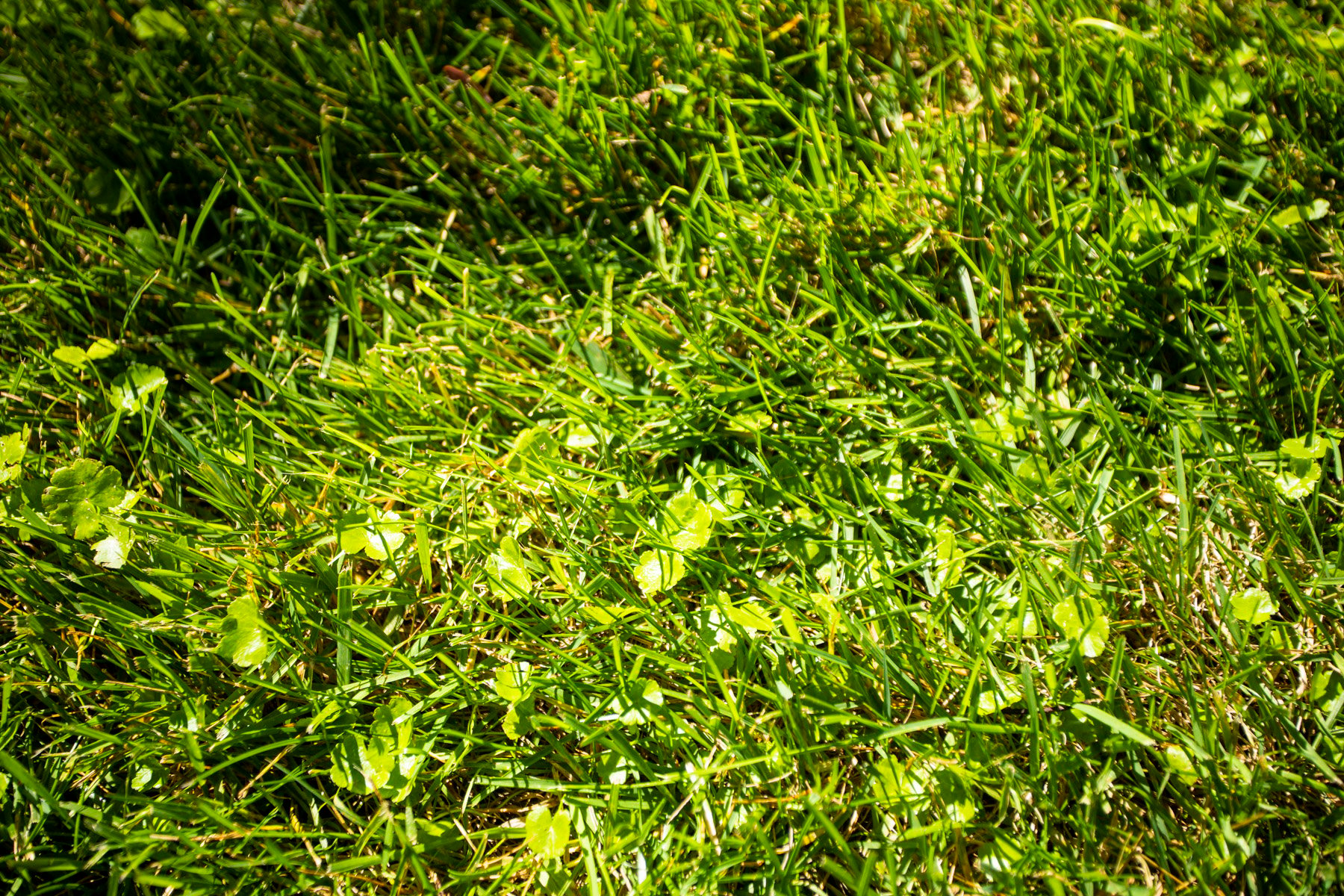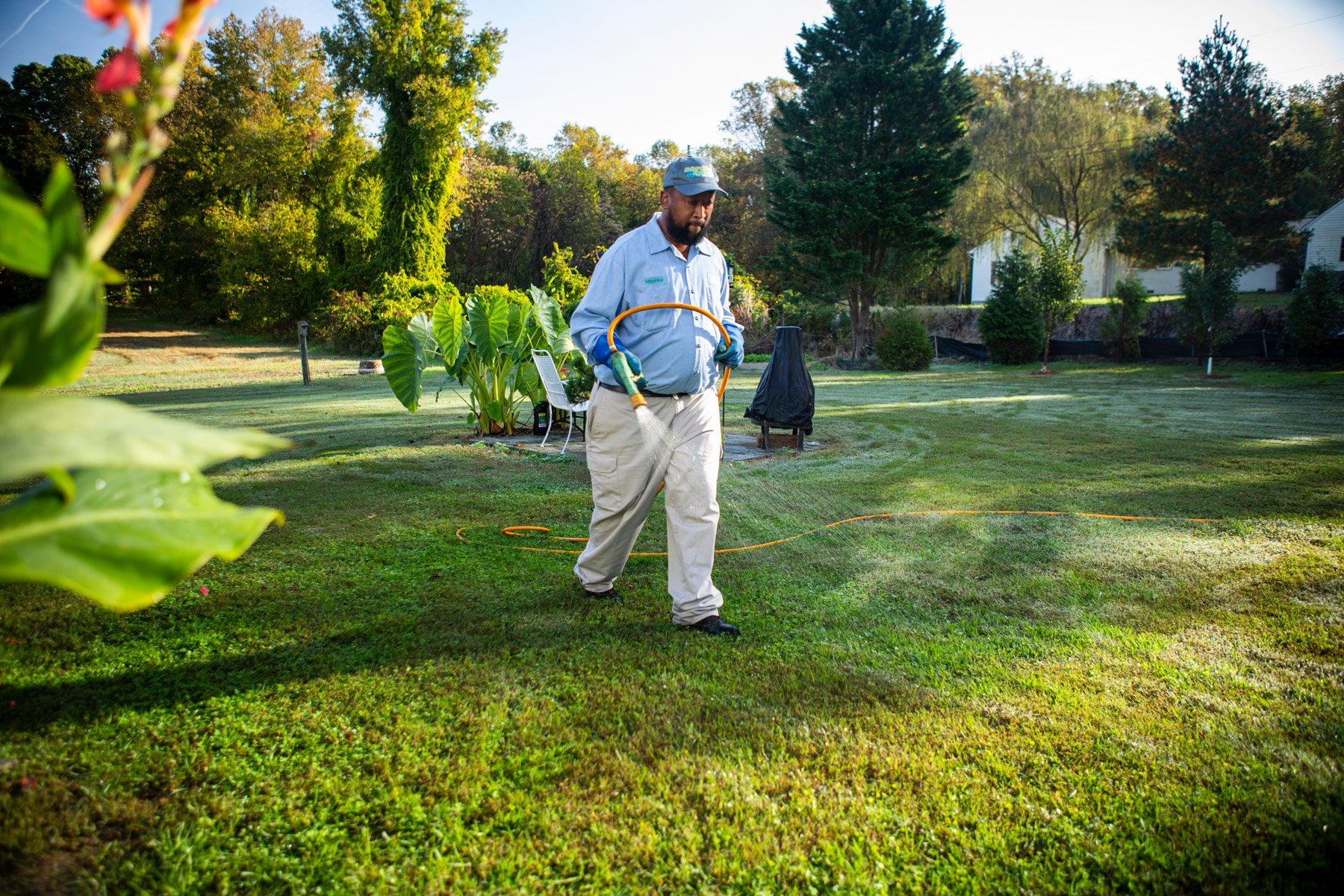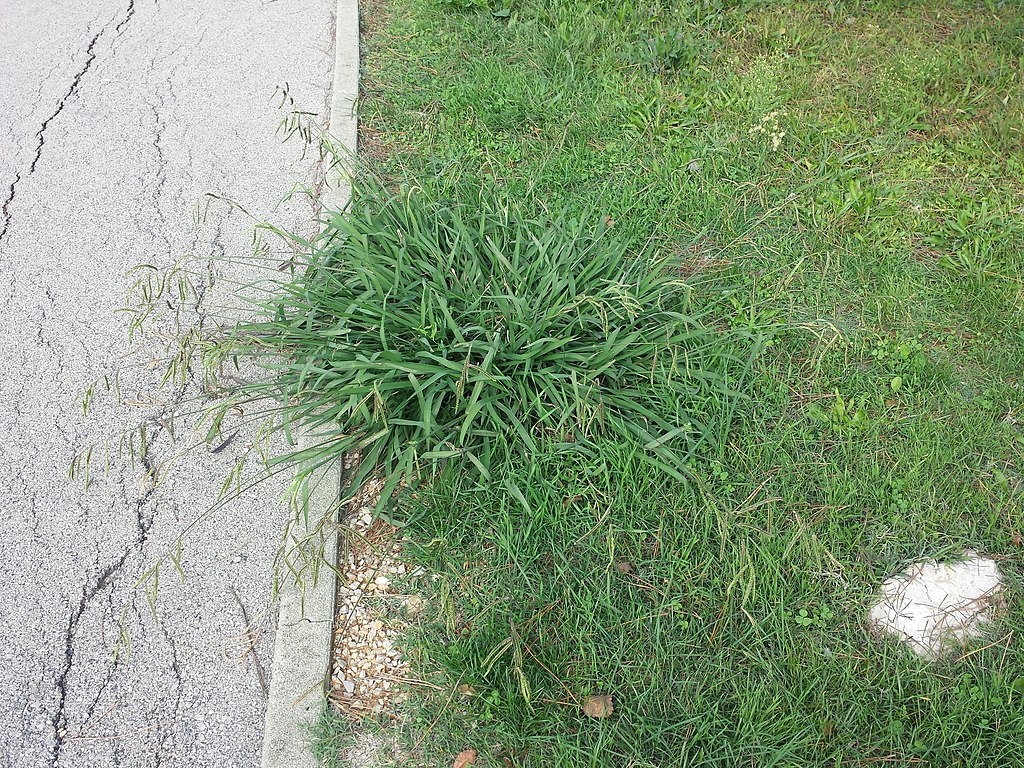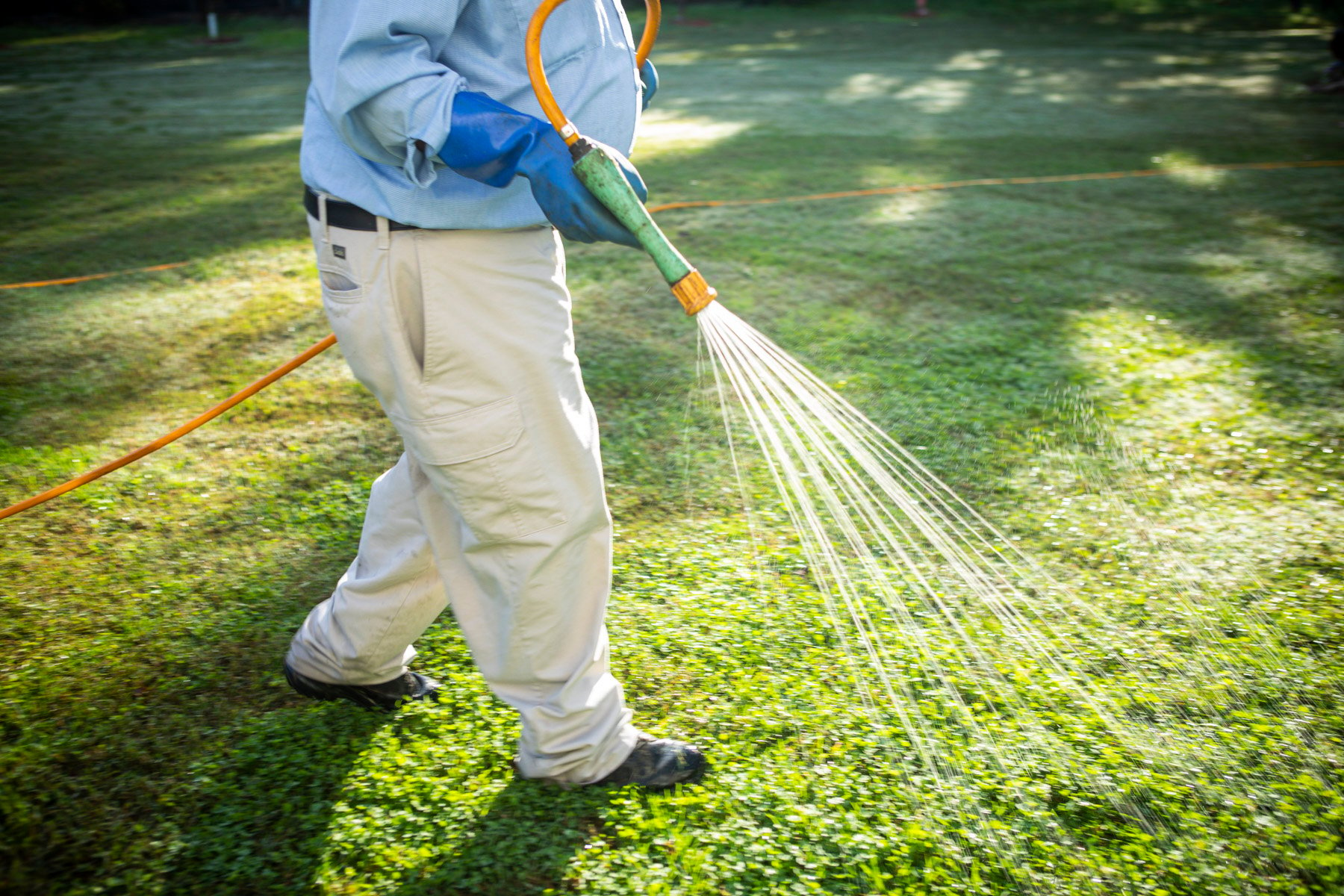7 Things to Know About Pre-Emergent Weed Control in Maryland
Weeds are the worst. They ruin your perfect lawn picture. And who wants a blemish in their gorgeous, green lawn?
Did you know that weeds aren’t only controlled after they emerge from the ground? There are actually multiple ways to tackle weeds, and one of the best ways is to do it before they burst forth from the soil. This is called pre-emergent weed control, and it’s an essential tool in an effective weed management strategy. Watch this video about weeds.
Pre-emergent weed control has some specific requirements to work best at keeping those weeds at bay.
We bet you have some questions. We completely understand.
Use This Lawn Weed ID Tool to Spot Weeds in Your Lawn
Here are some of the most common pre-emergent weed control questions and answers to ensure you have all of the information you need to keep your lawn weed-free.
About Pre-Emergent Weed Control
Weeds are survivors. Sometimes their seeds will sit dormant for years before the right conditions enable them to erupt.
This is why when you’re developing a weed control strategy for your lawn, it’s best that you have all of the options available to you. Pre-emergent weed killer is one of those tools you don’t want to leave out of your arsenal.
These 7 questions and answers will give you everything you need to know about this important weed fighting weapon.
1. What is Pre-Emergent Weed Control?
As its name suggests, pre-emergent weed control for lawns is targeted toward weeds that have not yet emerged from the soil.
When a weed starts growing after the pre-emergent herbicide application, it will hit the herbicide barrier and the roots won’t be able to continue growing.
2. When Should Pre-Emergent Weed Control Be Applied?
Timing is critical with pre-emergent weed killer.
Ideally, you want to target your application before the soil temperatures reach a constant 56 to 58 degrees Fahrenheit. This is when the weeds will begin to germinate.
The timing of when this ideal temperature occurs can vary from year to year and based on your sun exposure. For instance, a hill with southern exposure to the sun will reach that temperature threshold much sooner than a lawn with northern exposure to the sun.
 Natural Green likes to get all of its pre-emergent herbicide applications in Maryland done by the end of March or early April at the latest to ensure the product is down before this temperature window arrives.
Natural Green likes to get all of its pre-emergent herbicide applications in Maryland done by the end of March or early April at the latest to ensure the product is down before this temperature window arrives.
3. What Weeds Does Pre-Emergent Weed Control Kill?
Pre-emergent weed killer targets grassy weeds best.
The biggest menace to the Maryland lawn is crabgrass, and that’s what pre-emergent works hardest to squash. If you have crabgrass problems, pre-emergent herbicide will help you alleviate them. Crabgrass germinates in the spring, so these weeds would be best targeted in March with pre-emergent.

Annual bluegrass is another one that pre-emergent works well to prevent. But since this weed germinates in the fall, you’d want to target it with pre-emergent herbicides in late summer/early fall.
4. How Should Pre-Emergent Weed Control Be Applied?
Pre-emergent weed control for lawns provides a blanket of protection on your lawn to limit as many of these grassy weeds before they grow.
This means coverage is key. The product must be mixed correctly and applied at the right rate to cover your lawn thoroughly, providing this “blanket” of control.
5. How Long Does Pre-Emergent Weed Control Last?
While every product reacts differently after application based on different factors, such as weather conditions, every product also has an efficacy or expected length of control.
Natural Green likes to apply pre-emergent weed control in two split applications to lengthen the control and maximize the effectiveness of the product. This helps catch areas that unexpectedly get warmer faster, for example. Since those weed seeds can sit dormant in the ground for years before the perfect conditions force them to emerge, we found this works best to ensure we control the most weeds we can before they grow.
6. Is Pre-Emergent Weed Control Safe?
Pre-emergent weed control is not harmful to your lawn, your pets, or anyone going onto your lawn after the application dries.
If you’re planting new lawn, you shouldn’t apply this product to the area beforehand since it could impact new lawn seed growth.
And once it’s applied in a liquid form, we usually recommend waiting about 45 minutes for the product to dry so that you don’t disturb it or limit its ability to do its job.
7. What Happens If I See Weeds After a Pre-Emergent Weed Control Application?
While the goal is to eliminate as many weeds as possible with pre-emergent weed killer, sometimes weeds find a way to sneak through. If they were already above ground, for instance, but you didn’t see them, then it's likely the pre-emergent herbicide won’t get them in time and they’ll continue growing.
Other factors can sometimes impact the product. An extremely wet spring, for example, can cause some weed breakthrough.
There are also some weeds pre-emergent herbicides don’t help, such as winter annuals. This is when post-emergent weed control can save the day and take care of any other weeds.
Get Ahead of Weeds
Ready to tackle weeds before they take over your lawn? Then pre-emergent weed control could be a great part of your strategy.
Still feeling lost as to how pre-emergent herbicides works? We understand. It can be pretty confusing to target weeds at the right time to ensure they don’t make an appearance in your well-kept lawn.
Are weeds giving you headaches? Let us help you maintain a weed-free lawn in Central or Southern Maryland. Get started today with a free quote. Together, we’ll prepare a customized plan that leads you to the best choice for you and your lawn.
Image Source: Dallisgrass
Weeds are the worst. They ruin your perfect lawn picture. And who wants a blemish in their gorgeous, green lawn?
Did you know that weeds aren’t only controlled after they emerge from the ground? There are actually multiple ways to tackle weeds, and one of the best ways is to do it before they burst forth from the soil. This is called pre-emergent weed control, and it’s an essential tool in an effective weed management strategy. Watch this video about weeds.
Pre-emergent weed control has some specific requirements to work best at keeping those weeds at bay.
We bet you have some questions. We completely understand.
Use This Lawn Weed ID Tool to Spot Weeds in Your Lawn
Here are some of the most common pre-emergent weed control questions and answers to ensure you have all of the information you need to keep your lawn weed-free.
About Pre-Emergent Weed Control
Weeds are survivors. Sometimes their seeds will sit dormant for years before the right conditions enable them to erupt.
This is why when you’re developing a weed control strategy for your lawn, it’s best that you have all of the options available to you. Pre-emergent weed killer is one of those tools you don’t want to leave out of your arsenal.
These 7 questions and answers will give you everything you need to know about this important weed fighting weapon.
1. What is Pre-Emergent Weed Control?
As its name suggests, pre-emergent weed control for lawns is targeted toward weeds that have not yet emerged from the soil.
When a weed starts growing after the pre-emergent herbicide application, it will hit the herbicide barrier and the roots won’t be able to continue growing.
2. When Should Pre-Emergent Weed Control Be Applied?
Timing is critical with pre-emergent weed killer.
Ideally, you want to target your application before the soil temperatures reach a constant 56 to 58 degrees Fahrenheit. This is when the weeds will begin to germinate.
The timing of when this ideal temperature occurs can vary from year to year and based on your sun exposure. For instance, a hill with southern exposure to the sun will reach that temperature threshold much sooner than a lawn with northern exposure to the sun.
 Natural Green likes to get all of its pre-emergent herbicide applications in Maryland done by the end of March or early April at the latest to ensure the product is down before this temperature window arrives.
Natural Green likes to get all of its pre-emergent herbicide applications in Maryland done by the end of March or early April at the latest to ensure the product is down before this temperature window arrives.
3. What Weeds Does Pre-Emergent Weed Control Kill?
Pre-emergent weed killer targets grassy weeds best.
The biggest menace to the Maryland lawn is crabgrass, and that’s what pre-emergent works hardest to squash. If you have crabgrass problems, pre-emergent herbicide will help you alleviate them. Crabgrass germinates in the spring, so these weeds would be best targeted in March with pre-emergent.

Annual bluegrass is another one that pre-emergent works well to prevent. But since this weed germinates in the fall, you’d want to target it with pre-emergent herbicides in late summer/early fall.
4. How Should Pre-Emergent Weed Control Be Applied?
Pre-emergent weed control for lawns provides a blanket of protection on your lawn to limit as many of these grassy weeds before they grow.
This means coverage is key. The product must be mixed correctly and applied at the right rate to cover your lawn thoroughly, providing this “blanket” of control.
5. How Long Does Pre-Emergent Weed Control Last?
While every product reacts differently after application based on different factors, such as weather conditions, every product also has an efficacy or expected length of control.
Natural Green likes to apply pre-emergent weed control in two split applications to lengthen the control and maximize the effectiveness of the product. This helps catch areas that unexpectedly get warmer faster, for example. Since those weed seeds can sit dormant in the ground for years before the perfect conditions force them to emerge, we found this works best to ensure we control the most weeds we can before they grow.
6. Is Pre-Emergent Weed Control Safe?
Pre-emergent weed control is not harmful to your lawn, your pets, or anyone going onto your lawn after the application dries.
If you’re planting new lawn, you shouldn’t apply this product to the area beforehand since it could impact new lawn seed growth.
And once it’s applied in a liquid form, we usually recommend waiting about 45 minutes for the product to dry so that you don’t disturb it or limit its ability to do its job.
7. What Happens If I See Weeds After a Pre-Emergent Weed Control Application?
While the goal is to eliminate as many weeds as possible with pre-emergent weed killer, sometimes weeds find a way to sneak through. If they were already above ground, for instance, but you didn’t see them, then it's likely the pre-emergent herbicide won’t get them in time and they’ll continue growing.
Other factors can sometimes impact the product. An extremely wet spring, for example, can cause some weed breakthrough.
There are also some weeds pre-emergent herbicides don’t help, such as winter annuals. This is when post-emergent weed control can save the day and take care of any other weeds.
Get Ahead of Weeds
Ready to tackle weeds before they take over your lawn? Then pre-emergent weed control could be a great part of your strategy.
Still feeling lost as to how pre-emergent herbicides works? We understand. It can be pretty confusing to target weeds at the right time to ensure they don’t make an appearance in your well-kept lawn.
Are weeds giving you headaches? Let us help you maintain a weed-free lawn in Central or Southern Maryland. Get started today with a free quote. Together, we’ll prepare a customized plan that leads you to the best choice for you and your lawn.
Image Source: Dallisgrass


